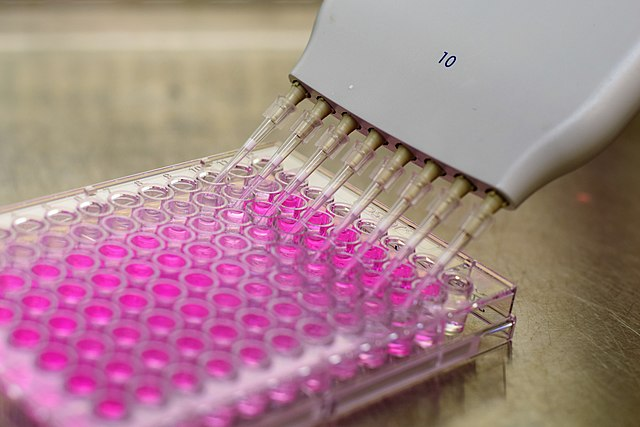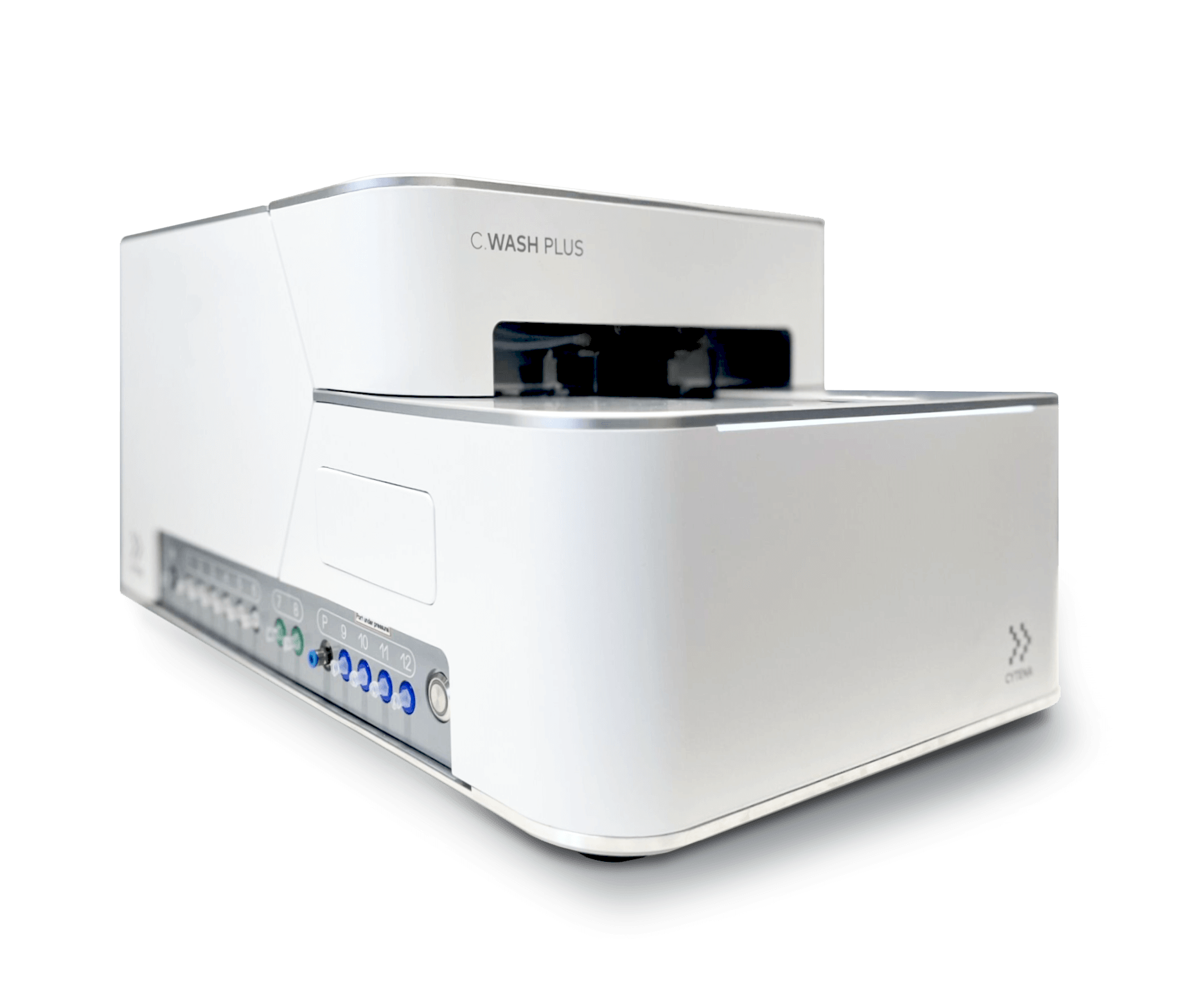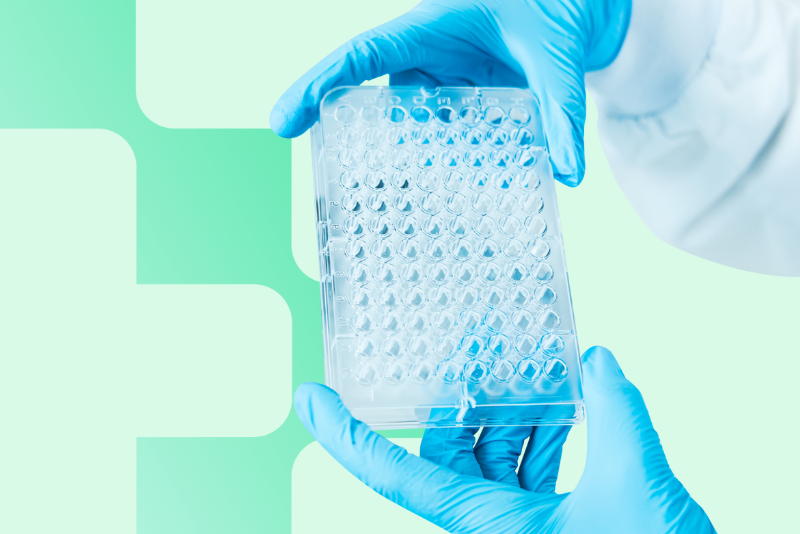Nyheter
- 2025-01-22
- 13:01
Automated Plate Washing for Enhanced Laboratory Workflows
Plate washing is a fundamental yet often underestimated step in life science workflows. Effective plate washing is crucial for applications like enzyme-linked immunosorbent assays (ELISAs) and cell-based assays, ensuring the removal of unbound reagents and preventing cross-contamination. Accurate plate washing safeguards the integrity of experiments and optimizes the use of valuable reagents. By maintaining consistent and reliable conditions, appropriate plate washing enhances the accuracy and reproducibility of results within and between laboratories. This article will examine the critical role of plate washing in research laboratories and highlight the importance of automation in streamlining and optimizing this essential process.
Importance of Plate Washing in Life Sciences
Plate washing is a crucial yet often overlooked component of many core laboratory workflows, including cell-based assays and ELISAs. Inadequate or poorly executed plate washing can have severe consequences for experimental success, potentially leading to wasted reagents and loss of precious samples. Plate washing helps to ensure that all test conditions are performed uniformly and removes sources of background noise. Accurate and efficient plate washing is essential within individual workflows and for repeat experimentation to ensure reproducibility and reliability. Manual pipetting of washing steps significantly increases the chances of cross-contamination and improper reagent dispensing (Fig. 1).

Applications
Plate washing is a fundamental step in many core biological workflows that are used extensively in research and clinical settings.
ELISA
ELISA is an essential technique for accurately detecting and quantifying specific antigens, making it indispensable for diagnostic workflows, among other applications. Plate washing is vital for successful ELISA workflows, because it removes unbound reagents and reduces background noise, thereby enhancing assay specificity and accuracy. Poor washing leads to misleading results and wasted time and resources (Alhajj et al., 2024).
Cell-based Assays
Cell-based assays span many research and development applications, including drug screening and toxicity testing (Wei et al., 2021). Plate washing in cell-based assays ensures appropriate removal of test compounds, ensuring consistency and reliability in assay results. Careful washing is also crucial for minimizing issues caused by cell detachment.
Molecular Techniques
Many highly sensitive molecular techniques, including protein-binding assays, require efficient and accurate plate washing (Lapetina & Gil-Henn, 2017). Effective washing ensures the removal of unbound reagents, minimizes background interference, and enhances the overall reliability and sensitivity of experimental results.
Cell Culture
Cell culture requires plate washing to passage cells and to remove specific growth factors or reagents used in experiments and during routine culture (Segeritz & Vallier, 2017). Improper handling of cells, including during washing steps, can cause cell stress, cell death, and detachment, potentially delaying research progress and producing confounding results (Takahashi et al., 2022).
Advantages of Automated Plate Washing
Laboratory automation, including plate washing, helps overcome many perennial challenges associated with manual methods, ensuring more consistent workflows and generating more reliable results (Holland & Davies, 2020).
Efficiency
Automated systems can wash plates significantly faster than manual methods, which comes with numerous benefits. The obvious benefit is faster workflows, saving time and shortening research timelines. Secondly, more efficient washing means that sensitive assays or those using cells spend less time outside optimal conditions, thereby reducing the chances of variation. Efficient washing increases throughput, allowing researchers to collect more high-quality data in less time.
Accuracy
Crucially, the increased speed associated with automated washing does not come at the expense of accuracy. On the contrary, automation significantly increases washing accuracy compared to manual methods. This means decreased chances of cross-contamination and a reduction in the presence of residual reagents after washing steps. Ultimately, automated washing boosts the chances of experimental success by removing confounding variables and ensuring consistent, reliable results.
Cost-effectiveness
Automation facilitates assay miniaturization, which means that researchers can generate more reliable results with significantly less investment in expensive reagents. With automated washing, researchers can use multiwell formats, reducing the number of plates required per experiment and thereby reducing waste and expense.
The C.WASH PLUS from CYTENA is compatible with 96-, 384-, and 1536-well plate formats, enabling high throughput and versatility for various laboratory applications. The centrifugal washing mechanism leads to 0.1 µL residual volume after two 1-minute washing steps, meaning the C.WASH PLUS minimizes reagent carryover, ensuring high assay accuracy and reliability (Fig. 2).

Conclusion and Future Directions
Looking ahead, the future of automated plate washing lies in integrating intelligent systems and AI-driven protocols to achieve even greater precision and adaptability. Emerging technologies may offer enhanced flexibility for complex assays and seamless data integration for real-time monitoring. Additionally, sustainable innovations will focus on reducing environmental impact while expanding compatibility with new plate formats and novel assay types to meet the evolving demands of life sciences research.
Automated plate washing revolutionizes laboratory workflows by enhancing efficiency, accuracy, and cost-effectiveness. By minimizing human error and reducing reagent waste, it ensures reliable and reproducible results across various applications, from ELISA to cell-based assays. Solutions like CYTENA’s C.WASH PLUS exemplify the advancements in automation technology, providing versatile and high-throughput capabilities tailored to diverse research needs.
Contact CYTENA’s team of experts today to learn more about the C.WASH PLUS and schedule a demo to see its revolutionary impact firsthand.
References
Alhajj, M., Zubair, M., & Farhana, A. (2024). Enzyme Linked Immunosorbent Assay. In StatPearls. StatPearls Publishing.
Holland, I., & Davies, J. A. (2020). Automation in the Life Science Research Laboratory. Front Bioeng Biotechnol, 8(571777).
Lapetina, S., & Gil-Henn, H. (2017). A guide to simple, direct, and quantitative in vitro binding assays. Journal of Biological Methods, 4(1), e62.
Segeritz, C.-P., & Vallier, L. (2017). Cell Culture. In Basic Science Methods for Clinical Researchers (pp. 151–172). Elsevier.
Takahashi, K., Okubo, C., Nakamura, M., Iwasaki, M., Kawahara, Y., Tabata, T., Miyamoto, Y., Woltjen, K., & Yamanaka, S. (2022). A stress-reduced passaging technique improves the viability of human pluripotent cells. Cell Reports Methods, 2(2), 100155.
Wei, F., Wang, S., & Gou, X. (2021). A review for cell-based screening methods in drug discovery. Biophysics Reports, 7(6), 504–516.
More news
Håll dig uppdaterad
Få det senaste först.



